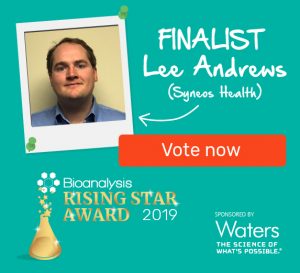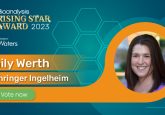Bioanalysis Rising Star Award finalist: Lee Andrews
 The winner will be announced in the coming months! Follow Bioanalysis Zone on Twitter, Facebook or LinkedIn to be the first to find out the winner!
The winner will be announced in the coming months! Follow Bioanalysis Zone on Twitter, Facebook or LinkedIn to be the first to find out the winner!
Nominated by: Kevin Andrew Carleton, Syneos Health (NC, USA); [email protected]
Supporting comments:
“Lee has a passion for bioanalysis unlike anyone you’ll ever meet. In the few years that he has been at Syneos Health he has been involved with many different facets of bioanalysis in our lab. He has been involved with large molecule PK, ADA and Nab method development, method validation and sample analysis. He is an innovative thought leader when it comes to troubleshooting and the development of difficult assay challenges. He takes on every challenge with enthusiasm and a ‘no fail’ mentality that is contagious and motivating to others in the team.Lee has spent time in our small molecule discovery group as well as playing an active role in the critical reagent characterization process. Lee also leads our immunogenicity data handling initiative from the lab perspective. He has spent countless hours with our LIMS programmer and other Business Technology representatives to automate the generation of custom reports for more efficient and error-free data tables.
Lee oversees a small team of about 5 individuals, and they all share a similar passion. This proves his leadership ability and is proof that he will continue to advance in the bioanalysis field based on his scientific, innovative and managerial skill set.”
1Describe the main highlights of your bioanalytical work.
I function as a Bioanalytical Principal Investigator and a leader for Ligand Binding method development. In the course of my job, I designed a hybrid Immunoassay format that uses a SPEAD clean-up step followed by a standard bridging format for detection. This hybrid format allowed for the assay to overcome matrix effects that caused analytical variance, and therefore, a high percent of false positives, and to maintain a high degree of Drug Tolerance (50 ng/mL ADA in the presence of 500 ug/mL of Drug (or 1:10000 ratio ADA:Drug).
I designed and developed a series of protocols in SMP that allow for the automatic evaluation of ADA and NAB data. This has since been implemented by my entire site, and the company is expanding it to other lab locations due to the efficiency it produces in the collection, evaluation and reporting of ADA/NAB data.






